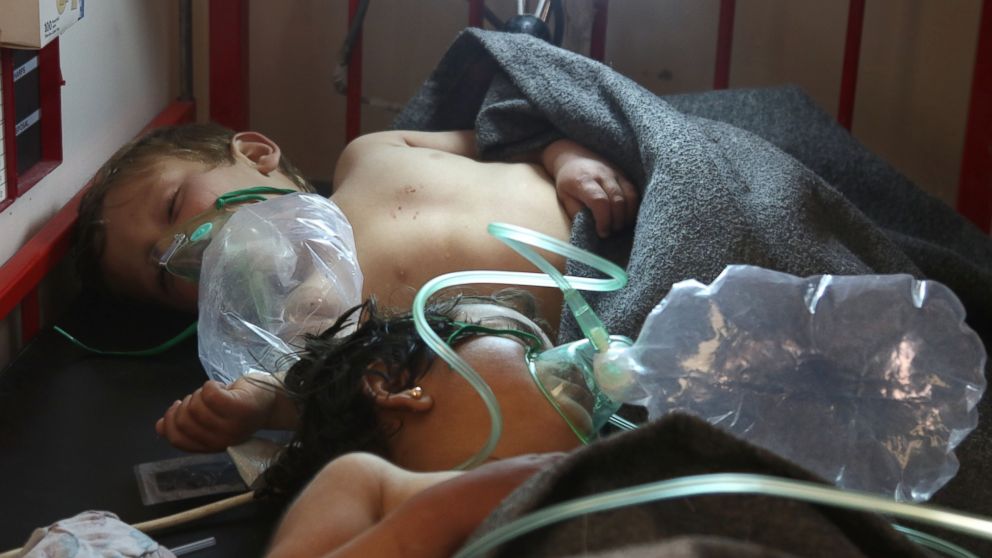What to know about the nerve gas sarin suspected in Syria attack
— -- Reports that dozens of people in Syria, including young children, were killed in a suspected nerve gas attack has renewed attention on the suspected agent, sarin gas.
The gas can cause death in minutes and is "one of the most toxic of the known chemical warfare agents," according to the Centers for Disease Control and Prevention.
Using sarin or similar chemical weapons is prohibited under the Chemical Weapons Convention, which has 192 signatory states around the world. According to the Organization for the Prohibition of Chemical Weapons, which implements the agreement, more than 95 percent of those nations' declared stockpiles of chemical weapons, including sarin, have been destroyed since the convention went into effect in 1997.
However, sarin has been used in terrorist attacks and civil conflicts over the past several years.
The group released a statement after Tuesday's attack that it was "seriously concerned about the alleged chemical weapons attack reported by the media" and that it is gathering information on the attack.
Here's a breakdown of what sarin does.
What is sarin?
The deadly chemical is "classified as a nerve agent," according to the CDC. It was developed in Germany in 1938 as a pesticide.
How does it work?
Sarin's chemical name is isopropyl methylphosphonofluoridate. It is a colorless, odorless liquid that can be vaporized. One to 10 milliliters can be fatal to humans, according to the CDC. If it is absorbed through the lungs, eyes or skin, the chemical blocks an enzyme in the nervous system used to control muscles. As a result, muscle function, necessary for breathing, among other processes, can become impossible, and many victims die from asphyxiation.
A single drop of sarin can cause muscle twitching and sweating, according to the CDC.
What are the symptoms?
Immediate signs of sarin exposure include runny nose, watery eyes, constricted (or pinpoint) pupils, blurred vision, excessive sweating, chest tightness, rapid breathing and altered heart rate. Exposure to a large dose can cause loss of consciousness, convulsions, paralysis and respiratory failure that leads to death.
People exposed to a small amount of the chemical are likely to survive without long-term complications. If people are exposed to a large dose, they are significantly less likely to survive or fully recover.
Is there a treatment?
The CDC recommends removing exposed clothing, since the chemical can continue to cause reactions after initial exposure. Antidotes can be given to protect receptors so that nerves aren't affected by the chemical. Synthetic versions of the enzyme can be administered to help patients regain muscle function.
The OPCW recommends that emergency responders and military personnel use an auto-injector of antidotes to quickly counteract the effects of the gas. Survivors of an attack may continue to need medical care for weeks, months or indefinitely.
"The victim may require medical care not only for mental disorders such as difficulty in sleeping, amnesia, difficulties in concentrating and anxiety but also for muscular weakness," the group said, adding that mental issues may occur after exposure to even low doses.
In addition to sarin's known use in a 2013 attack in Syria and its suspected use on Tuesday, it was famously used twice by Aum Shinrikyu, a doomsday cult in Japan. It attacked a residential area in 1994 and the Tokyo subway system in 1995, leaving 19 people dead and thousands of others injured, according to the OPCW.




